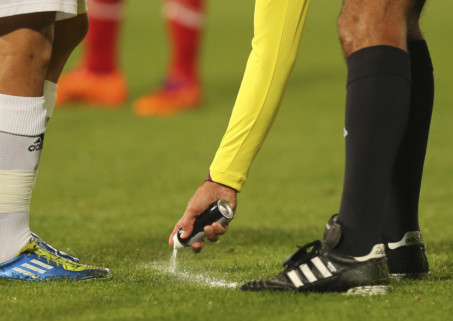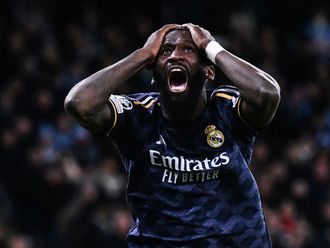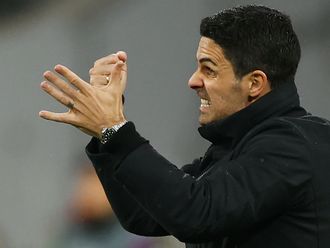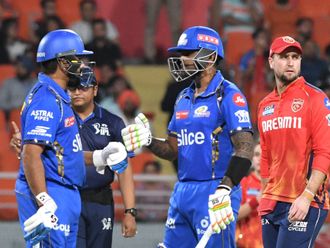
It is still considered among the most controversial of goals — Geoff Hurst’s second in England’s 4-2 victory over West Germany in the 1966 World Cup final at Wembley. The teams were tied 2-2 after the regulation 90 minutes and Hurst’s goal in extra time swung the match in favour of the hosts. The Germans still believe the ball did not cross the line, although Hurst is on record saying goal line technology would have stopped “50 years of German moaning”.
Television replays from various angles have shown that the ball did not indeed cross the goal line, but it is 48 years too late to do anything about it. Fast-forward to the 2010 World Cup in South Africa, where Frank Lampard’s shot clearly crossed the line against Germany. The goal was disallowed in a match that England lost 4-1, when awarding it would have made the score 2-2 at that point.
Since that day in Bloemfontein, Fifa, football’s global governing body, has been toying with the idea of using technology to determine with certainty when the ball crosses the line. And goal line technology will be used for the first time in a World Cup in Brazil.
High-speed tech
The technology will be provided by German company GoalControl GmbH and if you think that is something of a coincidence — given the amount of scrutiny Hurst’s goal received from the German press — what makes it even more ironic is that German football clubs themselves rejected the introduction of goal line technology in the Bundesliga a couple of months ago. Champions Bayern Munich have, however, since called for its use.
The GoalControl-4D system that will be used at the World Cup has 14 high-speed cameras in place around the pitch, with any goal scored confirmed automatically within a second via a vibration and visual signal on each match official’s watch.
According to Fifa sources, this technology will cost up to $275,000 (Dh1 million) per stadium to install.
Vanishing act
Besides the especially designed watch, the referee will also be armed with a vanishing spray that will be used to mark out free kicks. It will be used to mark a line on the ground where the defensive wall and the ball must be during free kicks to stop players in the defensive wall from moving closer to the ball, while a circle will also be drawn where the ball is to be placed for a free kick. The water-based spray disappears about a minute after use.
Fifa President Sepp Blatter and Michel Platini, head of European football governing body Uefa, don’t see eye to eye on various rule changes — the use of goal line technology being just one of them. Platini prefers just the use of an extra assistant referee on each goal line, but has recently come around to the idea of using technology.
Another area of conflict between these two footballing bigwigs is the triple punishment rule, which sees players receiving a red card and a ban and their opponent getting a penalty if a clear goal-scoring opportunity has been taken away in the 18-yard box. Platini feels the punishment is too harsh and the red card isn’t needed.
At the moment, many games are ruined when a team is reduced to ten men after a foul, especially if they also concede a goal from the resulting penalty — something that could have a major impact on matches in Brazil.
Changes ahead
Talking of rules, one that has probably undergone more changes than any other over the years is the offside rule. The latest amendment states that an attacker should be considered offside when “gaining an advantage by being in that position” in situations that will now include receiving the ball from a rebound or deflection from the goal frame or a player in the defending team attempting a tackle, block or save.
This amendment comes after a change to the original rule was introduced two years ago, which allowed players to be in an offside position provided they were not actively involved in play. It seems a far cry from the days when offside simply meant that there were fewer than two opposing players between the striker and the opposing goal line when he received the ball.
And while on the subject of balls, the Brazuca ball that will be used for the 2014 World Cup has thankfully been well received by players, unlike its predecessor, the more lightweight Jabulani, which was hard to control and unpredictable in the air.
For those interested in name origins, Brazuca is an informal local term that means Brazilian or describes the Brazilian way of life. The colours and ribbon design of the ball panels symbolise the traditional multicoloured wish bracelets commonly worn in the country. While both Jabulani and Brazuca are adidas products, the latter has improved grip, touch, stability and aerodynamics, as well as being the most tested adidas ball of all time.
For all that testing however, what really matters once the Brazil World Cup gets under way on June 12 is not what the Brazuca can do, but what the likes of Lionel Messi, Cristiano Ronaldo and Neymar Jr will do with it at their feet.












